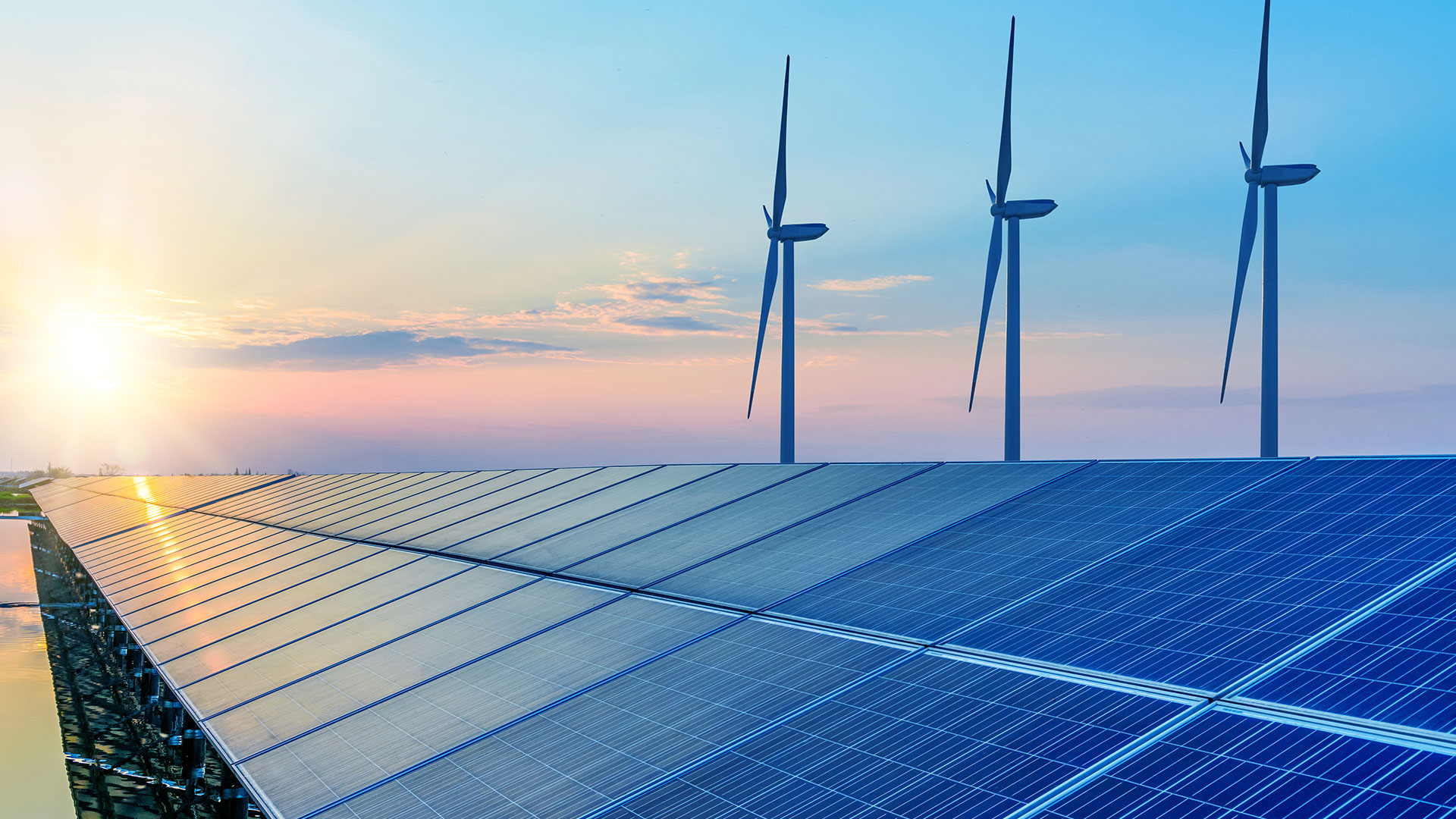
Publication
The Australian IP Report 2025: Staying ahead of the pack
IP Australia released the Australian IP Report 2025 (IP Report), providing the latest IP trends, statistics and policy developments across Australia.


Australia | Publication | September 2019
Two key renewable energy markets, Victoria and South Australia are tightening their guidelines and planning policies for renewable energy facilities against a backdrop of increasing development of renewable electricity generation and storage projects in both states.
The Victoria Government recently released the Solar Energy Facilities – Design and Development Guideline (Victorian Guidelines) which outline the policy, legislative and statutory planning arrangements for large-scale solar energy facilities in Victoria and have subsequently been incorporated into all planning schemes in Victoria.
As described below, the Victorian Guidelines provide valuable insights into best practice applications and we expect they will be welcomed by developers, local councils and the broader community. In particular, they contemplate a change in the responsible authority for approvals from local councils to the Minister for Planning and clarify the position regarding ‘strategically important’ agricultural land. Moreover, future applicants will need to follow the guidelines in applications for large scale solar facilities now that they have been incorporated into Victorian planning schemes.
To further strengthen the Victorian Government’s commitment to the generation of renewable energy, the Renewable Energy (Jobs and Investments) Amendment Bill 2019 (Bill) was introduced into the Victorian parliament on 13 August 2019 to legislate an increase in Victoria’s Renewable Energy Target (VRET) to 50% by 2030.
The South Australian State Planning Commission recently released a Renewable Energy Policy in the Planning and Design Code Discussion Paper (South Australian Discussion Paper). The South Australian Discussion Paper outlines a proposed framework, timelines and high-level process for developing new renewable energy policies to be included within the South Australian Planning and Design Code (Code).
The Victorian Guidelines build on draft guidelines outlined in our previous legal update (available here). They reflect the similar policy approach applying to wind energy facilities.
The Victorian Guidelines are intended to guide the development of solar energy facilities over 1MW of generation capacity. They are a useful resource for proponents, responsible authorities and other stakeholders interested in understanding the development and approval process for solar energy facilities in Victoria.
Importantly, planning scheme amendment VC 161 was gazetted on 17 September 2019 which implements the Victorian Guidelines into the Victorian Planning Provisions and all planning schemes. This will mean that all applicants for a large scale solar facility will need to consider and follow the Victorian Guidelines.
The Victorian Guidelines cover three main themes:
This section sets out policy, strategy and legislative matters to consider at the site selection stage and approvals that might be needed at, or before the planning permit stage, including:
In particular, the potential conflict with, or loss of, agricultural land characterised as “strategically important” has been raised in a number of recent solar farm applications1. The Victorian Guidelines set out key factors that lead to agricultural land being considered to be high value and of strategic importance. Such features include high-quality soil, good rainfall, access to water, resilience to climate change, infrastructure investment and integration with industry.
Amendment VC 161 introduces state planning policy which is aimed at protecting agricultural land serviced by irrigation infrastructure in irrigation districts (prescribed under the Water Act 1989) from non-agricultural uses, such as renewable energy facilities.
The Secretary of the department administering the Water Act 1989 will be a recommending referral authority for renewable energy facilities within irrigation districts, to ensure the siting and design of these facilities minimises potential impacts on agricultural uses and productivity of declared irrigation districts.
This section of the Victorian Guidelines outlines factors to consider when preparing a planning permit application including community engagement as well as design, construction, operational and decommissioning considerations.
This section describes the Victoria Planning Provisions framework for the assessment of a planning permit for a solar energy facility. Significantly, and consistent with the regime for wind farm facilities, Councils have now been relieved of being the ‘Responsible Authority’ for determining and enforcing new planning permits for all large scale solar facilities.
The Minister for Planning is now the Responsible Authority for considering and determining new planning permit applications, amendments to new planning permits and matters which a permit requires be done to the satisfaction of the Responsible Authority for solar energy facilities and associated utilities to store, transmit or distribute the electricity generated by a facility with an installed capacity of 1MW or greater.2
Further, solar specific planning related issues such as glint and glare, landscape screening and the alleged heat island effect and the potential to impact on the integrity of irrigation networks, all issues raised recently in solar farm applications, have been addressed in the Victorian Guidelines.
We expect the Victorian Guidelines will serve as a valuable tool in navigating the complex planning landscape. Together, the suite of policy changes may also reduce solar project development costs and appeal risk. Specifically:
The Bill was introduced to increase the legislative VRET of 50% of electricity generated in Victoria to be sourced from renewable energy by 2030, which builds upon the current requirement for 25% of electricity to come from renewable sources by 2020 and 40% by 2025.
The new VRET set by the Bill will require significant additional generation and as a result supports and promotes the generation of electricity by means of large-scale facilities that use or convert renewable energy sources into electricity. The Government will be required to determine and publish the generation capacity to meet the 2025 target by 31 December 2019 and the 2030 target by 31 December 2025. The requirements for a capacity determination gives the market a 5 year outlook on the capacity requirements to meet the VRET.
The South Australian Discussion Paper sets out proposed changes to renewable energy policy and new planning policies for South Australia’s renewable energy sector, ahead of public consultation on the Planning and Design Code later this year.
The South Australian Discussion Paper recognises that the current suite of planning policies has facilitated a boom of renewable energy development (particular wind farms) but that the Code will need into take account contemporary issues and challenges.
For example, planning policies will need to be updated to:
The South Australian Discussion Paper recognises that specific policies may be called for to deal with:
In terms of grid stability and intermittency issues, the South Australian Discussion Paper recognises that the increasing mix of generation types presents network challenges. To address this, since May 2017, all new energy developments with a generation capacity over 5MW intending to connect to the South Australian electricity network must obtain approval from the South Australian Office of the Technical Regulator (OTR).
The need to meet the OTR grid stability and frequency control requirements has resulted in new battery storage technologies either as standalone developments or project components. Given the relatively small footprint and capacity of the storage facilities constructed so far, the South Australian Discussion Paper suggests that no new polices are required except where landscaping is required to mitigate visual impact. The paper does not make any policy suggestions about the sitting of renewable energy facilities relative to grid connection points.
The Minister for Planning takes over the role of being the Responsible Authority for permit applications for new large solar energy facilities from 17 September 2019 and going forward, the Victorian Guidelines are a relevant consideration in preparing planning permit applications for large-scale solar energy facilities to be determined by the Minister.
Formal consultation on the proposed policies in the South Australian Discussion Paper will be conducted in October 2019 as part of public consultation for the Code which will be introduced as part of a state-wide planning reform. Once the Code is operational, we envisage that South Australia may take the lead of other jurisdictions and include reference to guidelines similar to the Victorian Guidelines on specifying development application requirements for renewables facilities.
For more information, please contact a member of our renewable energy team.
Including in Shepparton Solar Farms Permit Applications (PCI) [2018] PPV 72 where Norton Rose Fulbright represented one of the applicants in this Panel hearing.
The Council will remain the responsible authority for applications lodged or permits issued prior to 17 September 2019 for renewable energy facilities (other than a wind energy facility), including any amendments to such permits and for matters required by the permit of the planning scheme to be done to the satisfaction of the responsible authority.

Publication
IP Australia released the Australian IP Report 2025 (IP Report), providing the latest IP trends, statistics and policy developments across Australia.

Publication
The Victorian Government has introduced major reforms to the security of payment (SOP) regime in Victoria with the Building Legislation Amendment (Fairer Payments on Jobsites and Other Matters) Bill 2025 (Vic) (the Bill).
Subscribe and stay up to date with the latest legal news, information and events . . .
© Norton Rose Fulbright LLP 2025